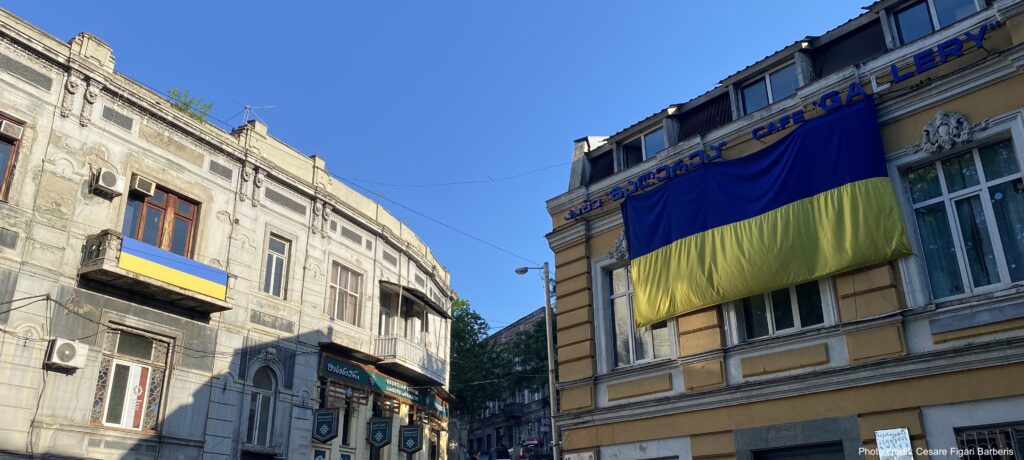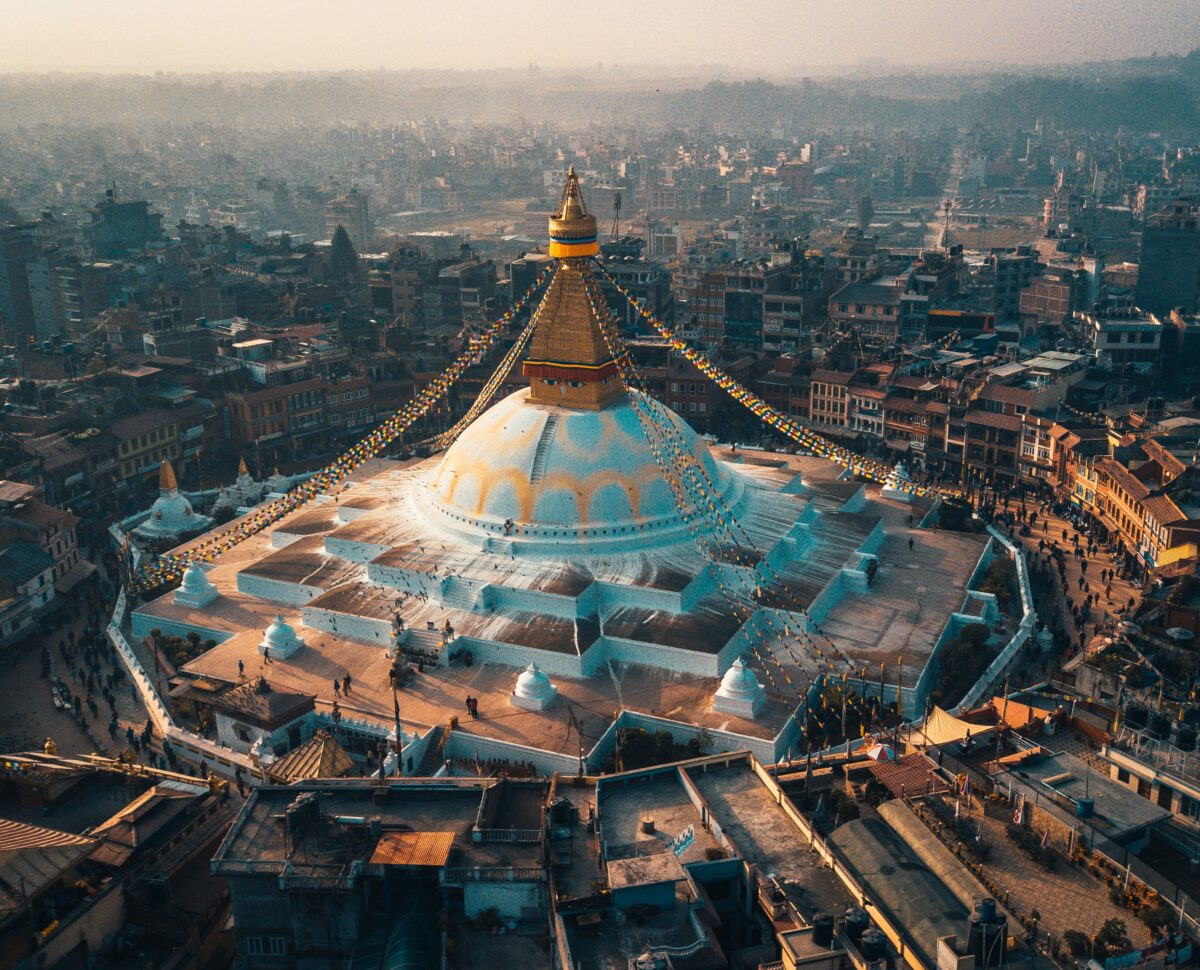
Cesare Figari Barberis
‘We have an important case where national leadership de-securitises the perceived threat of ‘hosting the enemy at home’, and is able to maintain inter-ethnic peace even in face of everyday confrontations and conflictual identities. This case carries insights for wider civil war scholarship: demonstrating political leadership’s role in preventing violence, even when some ingredients for civil conflict are present…’
Relations between Georgia and Russia have been confrontational since at least the beginning of the 19th century. Nonetheless, a large number of Russians presently live in Georgia: including the 20,000-40,000 who fled to Georgia following Russia’s invasion of Ukraine last February. Ethnic Georgians’ reception of this first wave of arrivals was harsh. Given Georgians’ very strong support for Ukraine and their association of the current war with the 2008 Russian-Georgian war, anti-Russian xenophobia and discrimination increased sharply in the initial months following migration. However, tensions calmed subsequently, and large-scale inter-ethnic clashes were avoided.
Building on the ‘leadership‘ theme in Civil War Paths’ ‘Sustaining Peace’ blog series, this post reflects on the Georgian Government’s role in preventing civil conflict – even, when previous war-related identities open the door to possible strife.

Historical context
To understand the current situation, we need to take a step back in time. Russia began a gradual annexation of Georgian territory around 1801. Georgia gained brief independence from the Russian Empire between 1918-1921, only to become a Soviet Socialist Republic following the Russian Revolution – composed of the Georgian Soviet Socialist Republic, the Abkhaz Autonomous Soviet Socialist Republic, and South Ossetian Autonomous Oblast. Georgia regained its independence following the USSR’s collapse in 1991. However, this process was not bloodless: Georgian-Ossetian clashes in 1991 ended with around 1,000 casualties and de facto South Ossetian independence. Georgian warlords sought to retake control of Abkhazia through military means in 1992: precipitating a full-scale 2-year war featuring almost 10,000 deaths, the displacement of 250,000 Georgians, and Abkhazian de facto independence. Georgian society views Russia as a puppet master behind separatist republics in Ossetia and Abkhazia, despite the former’s role in these conflicts being disputed.
On July 7th 2008, during Saakashvili’s presidency, Georgia commenced a full-scale artillery assault on South Ossetia. In response, Russian tanks entered South Ossetia, outnumbering the Georgian army. Both parties negotiated a ceasefire on August 12th. In the intervening month, the war had caused a further 850 casualties and displaced 35,000 more people. On August 26th, Russia formally recognised Abkhazian and South Ossetian independence. Since the less nationalistic Georgia Dream party won the 2012 parliamentary elections, Russian-Georgian relations have cooled.
Current events
Russia’s invasion of Ukraine on February 24th this year has abruptly worsened relations, however. Georgians support Ukraine’s cause passionately, drawing parallels between the latter’s experience and their own 90’s/00’s wars. Thousands protested in Ukraine’s favour before the Georgian Parliament, and Tiblisi has filled with anti-Russian graffiti.
Somewhat paradoxically, 20,000-40,000 thousand Russians, mostly anti-war liberals, fled to Georgia in the war’s early months. These new arrivals were less than welcome. Some newly arrived Russians – interviewed by myself and Leonardo Zanatta in September – mentioned facing verbal harassment, banking discrimination, and unemployment due to their nationality. Our interviewees also reported issues securing accommodation, with announcements between February and March 2022 reporting ‘we do not rent to Russians’. In certain cases, banks asked Russians to sign formal documents acknolwedging ‘Russia’s occupation of Georgian territory’. On the other hand, some Georgians we interviewed described migrant Russians as a ‘fifth column’ for the Kremlin – anticipating a possible Russian invasion of Georgian territory under the pretext of defending ethnic Russians. ‘We now have the enemy at home’, said one interviewee. Moreover, the sudden influx caused rent prices to skyrocket, generating further resentment. Of course, not all Russians experienced the same level of discrimination and harassment; as many Georgians remained neutral.
Nonetheless, some of the ingredients for civil conflict set out by Anastasia Shesterinina in her book Mobilizing in Uncertainty – everyday confrontation and path-dependent collective conflict identities – were present in Georgia during the last year. Ethnic identities are multi-layered and nuanced, as discussed by Qianrui Hu on this blog. Such nuance surely applies to those Russians who moved to Georgia. Nonetheless, the prospect for collective/identity conflicts between Russians and Georgians remain.

Violence averted (so far)
Yet large-scale violence has not occurred. The absence of violence between Georgians and Russian migrants exemplifies the role of ‘leadership’ in preventing conflict, even when pre-existing/collective conflict identities are present. The analysis presented in this post focuses on a particular time in Georgia, but can be useful for also other similar cases.
I trace the avoidance of violence in my case to two factors: the first wave of Russians’ mostly non-confrontational attitude upon arrival; and the absence of collective threat framing by Georgian governmental leadership. Indeed, a majority of the Russians we interviewed mentioned choosing Georgia as a destination country exactly because of its anti-Russia environment. Anti-war interviewees were aware of the environment into which they would arrive, and were prepared to tolerate possible discrimination. Moreover, the Georgian Government actively avoided fomenting inter-ethnic and inter-state tensions. Prime Minister Gharibashvili refused to implement sanctions against Russia since it would ‘harm the national interests of our country’, and accused the opposition of wanting to ‘organise provocations and to repeat the tragedy of the August war of 2008, which they were unable to avoid’. Hence, the Government rejected renewal of Georgian-Russian confrontation.
However, a second wave of Russians is now inbound in Georgia, including migrants with less liberal and less anti-war attitudes. There is no guarantee migrants from the second wave will be as tolerant and non-confrontational as those from the first wave. And, as anti-Russian emotions flare-up again, small-scale confrontations could occur. So far, the Government has rejected collective threat framing. It has attacked calls for introducing a visa regime as ‘shameful’ and ‘xenophobic’, and rejected allegations that fleeing Russians represent a threat to security as ‘completely absurd’. Such ‘leadership‘ by the Government has the potential to continue averting conflict between ethnic Georgians and Russian migrants.
Hence, we have an important case where national leadership de-securitises the perceived threat of ‘hosting an enemy at home’, and is able to maintain inter-ethnic peace even in face of everyday confrontations and conflictual identities (at least on the Georgian side). This case carries insights for wider civil war scholarship: demonstrating political leadership’s role in preventing violence, even when some ingredients for civil conflict are present.

